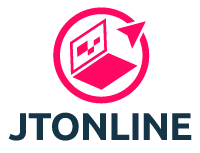Choosing a topic and target audience
The first step in creating an interview for a professional publication is choosing a topic. The topic should be relevant and interesting both for a wide audience and for specialists in your field. Analyze trends, current issues and problems in the field in which you work. For example, if you work in information technology, pay attention to new technologies, changes in legislation, or significant events affecting the industry. Consider the opinions and requests of your target audience so that the interview topic meets their interests and needs.
The target audience is a key aspect when choosing an interview topic. Understanding who your readers are helps you formulate questions and select appropriate interviewees. Audience analysis includes studying their professional level, interests, problems and expectations. For example, if your audience consists of young professionals, they may be interested in career growth and professional development topics. The better you know your audience, the more likely your interview will be relevant and useful. Don’t forget to conduct surveys and collect feedback to refine your audience’s interests.
Preparing interview questions and script
After choosing a topic, it is important to carefully prepare questions and interview script. Questions should be deep, thoughtful and stimulating to frank answers. Avoid trivial and too general questions, focus on those that will reveal new information or allow you to look at the topic from a new perspective. Make a list of basic and follow-up questions so you can be prepared for different conversation scenarios.
The interview script also plays an important role in the successful conduct of the interview. Structure the interview so that the questions flow logically into one another, creating a smooth and natural flow of conversation. Identify the main topics and subtopics you want to discuss. For example, start with personal questions, then move on to professional aspects, and finally ask questions about the future and plans.
Finding and contacting interviewees
Finding suitable interviewees is a task that requires time and effort. Look for experts in your chosen topic, people with unique experiences or perspectives. Use professional networks, social media, peer recommendations and contacts in your field. For example, if you are looking for an expert in the field of medicine, contact medical associations or specialized groups on social networks. Compile a list of potential interviewees and research their work and public appearances to ensure their competence and relevance.
Contact with interviewees should be professional and respectful. Introduce yourself, explain the purpose and format of the interview, and why you chose it. For example, you could write: “Hello, my name is Ivan Ivanov, I am the editor of XYZ magazine. We would like to interview you about your latest research in the field of neuroscience, as it is of great interest to our audience.” Offer a time and format of communication that is convenient for them. Make sure they understand how their information will be used and agree to all terms. Be prepared for rejection and don’t be discouraged – finding the perfect interviewee may take some time.
Conducting interviews: techniques and tools
Conducting interviews requires active listening skills and the ability to ask questions. Start with easy questions to establish rapport and create a comfortable atmosphere. Gradually move on to deeper and more complex topics. For example, start with the question “Tell me a little about yourself and your professional background” and gradually move on to more detailed questions about their experience and views. Listen carefully, do not interrupt, and show interest in the answers. Use paraphrasing techniques to clarify and confirm your understanding of what has been said.
Interview tools may vary depending on the communication format. It is important to have reliable devices to record audio and video if necessary. Use note-taking and time management apps to keep track of your interview and make sure you don’t miss important points. Online interviews require a stable internet connection and good call quality. Prepare backup options in case of technical failures. For example, have a backup recording device or a backup plan in case the connection goes down.
Recording and processing of materials
Recording the interview is a critical step to ensure the accuracy and reliability of the information. Make sure you use quality equipment to record audio and, if necessary, video. Test your devices before your interview to avoid technical problems. Always ask the interviewee for permission to record and explain how the materials will be used. For example, you can say: “We will be recording the interview for later transcription and publication, do you mind?”
Processing of materials includes transcribing recordings, editing and structuring information. Listen and re-read the recordings carefully to highlight key points and quotes. Use decryption software to speed up the process. Edit the text to remove unnecessary words and make it more readable and structured. Be sure to maintain the meaning and tone of your answers without distorting what was said.
Editing and formatting interviews for publication
Editing and designing interviews, such as longrid, for publication is an important stage that requires care and a professional approach. This process involves many aspects, from structuring the text to adding visual elements. It is important that the final material is readable, logical and attracted the attention of the audience.
- Make sure all material is transcribed and structured. Start by listening to the recordings and transcribing all the answers. This will allow you to have a complete understanding of the content of the interview and avoid losing important details.
- Start editing your text to make it smoother and more readable. Remove repetitions, correct grammatical and stylistic errors. Pay attention to the logic and consistency of the presentation. Try to maintain the original tone of the interviewee to convey his personality and communication style.
- Divide the text into logical blocks with subheadings. This will help readers better navigate the material and highlight key points. Subheadings should be informative and reflect the main content of each block.
- Add visual elements such as photographs, graphics or illustrations to make the material more attractive. Visual elements can help visualize information and make reading more fun. Make sure all images are in context and support the content of the text.
- Check all links and sources. Make sure they are listed correctly and point to relevant and reliable resources. This will increase the credibility of your material and confirm its authenticity.
Questions and answers
Answer 1: Choose topics that are relevant and interesting to your target audience. Analyze trends, current issues and problems in the field in which you work.
Answer 2: Write deep and thoughtful questions, avoid trivial and too general ones. Focus on those that will reveal new information or allow you to look at the topic from a new perspective.
Answer 3: Seek out subject matter experts through professional networks, social media, peer recommendations, and contacts in your field. Research their work and public speaking to ensure their competence and relevance.
Answer 4: Use active listening and paraphrasing techniques. Start with easy questions to establish rapport and create a comfortable atmosphere, gradually moving on to deeper and more complex topics.
Answer 5: Transcribe notes, edit and organize information. Use transcription software to speed up the process, and be sure to preserve the meaning and tone of your answers without distorting what was said.



